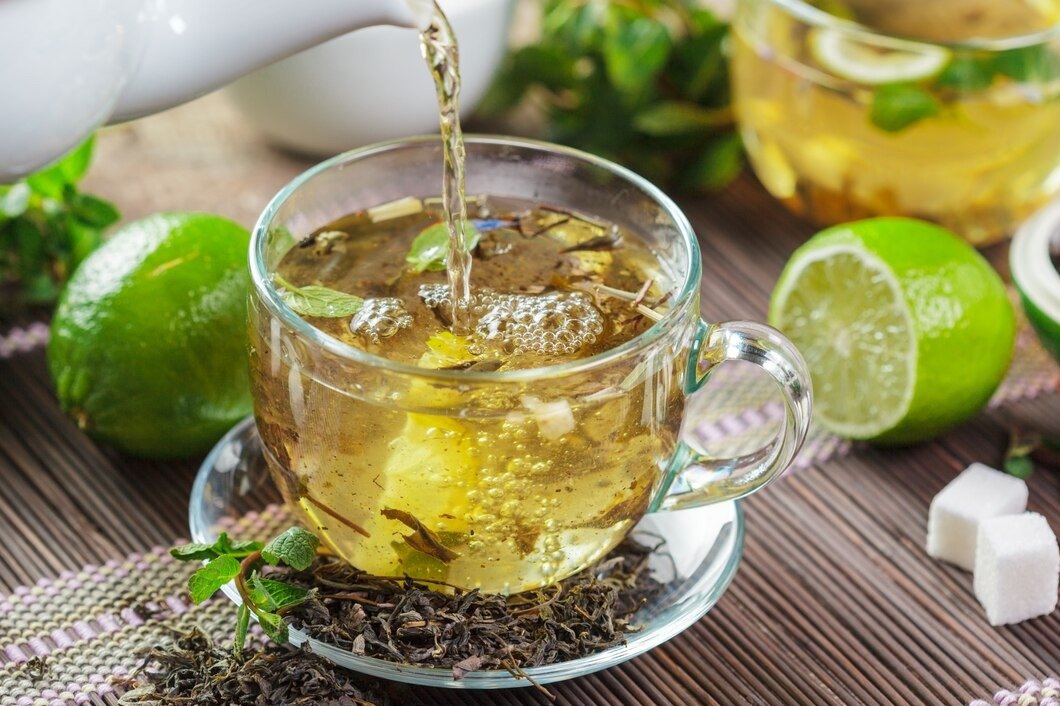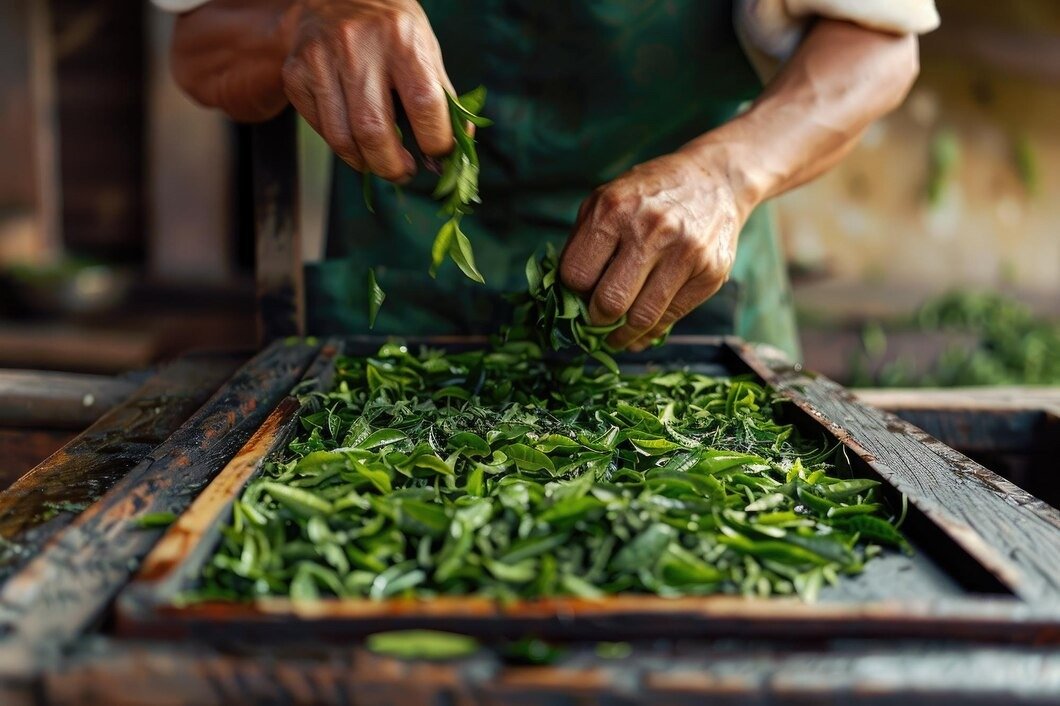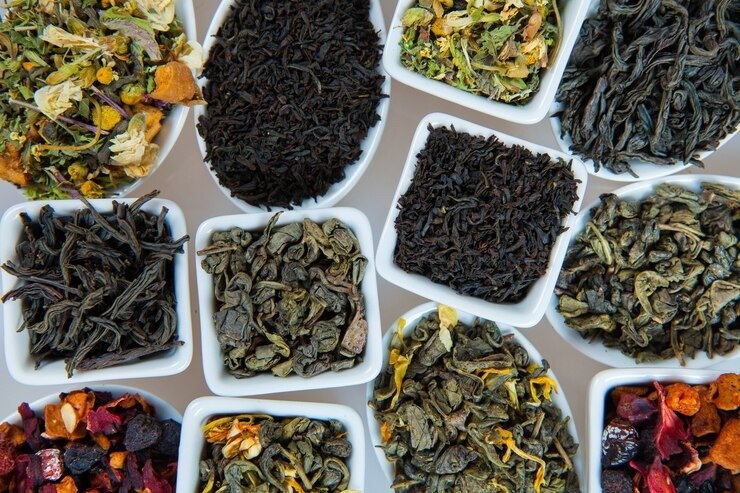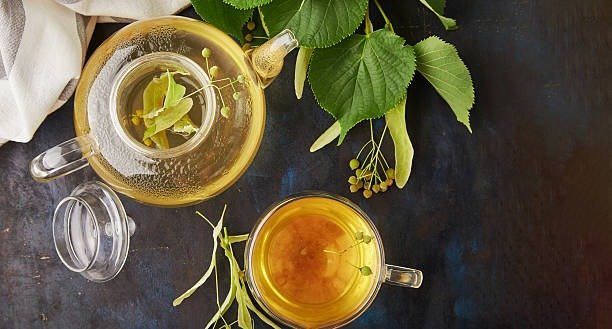A legacy of innovation, quality, and culinary experience.
Read our NewsletterExplore the benefits, types, and history of green tea, from boosting metabolism to improving heart health. Learn how to prepare the perfect cup for maximum benefit.
Green tea, derived from the Camellia sinensis plant, is one of the most popular and widely consumed beverages globally. Its long history, profound cultural significance, and extensive health benefits make it much more than just a drink. From traditional ceremonies to modern-day health-conscious routines, green tea continues to enjoy prominence in many cultures, especially in Asia. But its appeal has transcended borders and is now a favorite worldwide.
This comprehensive guide delves into everything you need to know about green tea from its origins to its health benefits, types, preparation methods, and much more. Whether you’re a seasoned tea drinker or someone new to the world of green tea, this guide will help you understand why this ancient beverage has stood the test of time.

Green tea is made from the leaves of the Camellia sinensis plant, the same plant used for making black and oolong teas. The difference between green tea and these other types of tea lies in the processing method. For green tea, the leaves are not allowed to oxidize or ferment, which helps preserve their green color and natural chemical composition. This minimal processing is what gives it a distinct flavor profile and impressive health benefits.
Unlike black tea, where the leaves are fully oxidized, green tea is either steamed or pan-fired shortly after harvesting to prevent oxidation. This helps to retain the tea's natural antioxidants, particularly a type of flavonoid known as catechins. These catechins, along with other bioactive compounds, are responsible for many of the health benefits associated with green tea. Ready Meals can also benefit from the antioxidant-rich properties of green tea, as adding it to your diet could enhance overall wellness.

The history of green tea is as rich and fascinating as the tea itself. It is believed that it was first discovered in China over 4,000 years ago. According to Chinese legend, Emperor Shen Nong, a scholar and herbalist, discovered tea when some leaves from a wild tree blew into his pot of boiling water. He was intrigued by the aroma and taste and began using it for medicinal purposes. Over time, this drink evolved into an integral part of Chinese culture, eventually spreading to other parts of Asia, such as Japan and Korea.
Green tea was also integrated into diets alongside other staples like Vegetables & Fruits, contributing to its widespread popularity and reputation as a healthful beverage. Green tea’s journey to the Western world began in the 17th century when Dutch traders brought it to Europe. It wasn’t long before it gained popularity in England, where it became a fashionable drink, replacing ale and coffee in many households. Today, green tea is enjoyed globally, from casual cups in coffee shops to traditional ceremonies in Japan.

One of the most appealing aspects of green tea is the variety it offers. There are several different types of green tea, each with unique flavors, aromas, and preparation methods. The key to understanding it lies in the variety available, as each type offers distinct benefits and experiences. Real Mayonnaise can even be incorporated into recipes with green tea, such as in matcha-flavored dressings, showcasing the versatility of both ingredients.
Sencha is the most popular green tea in Japan and is a favorite among casual drinkers. It is grown in direct sunlight and typically has a delicate flavor profile, often described as grassy or vegetal with a hint of sweetness. The leaves are steamed, which gives the tea its characteristic flavor. Sencha can vary in taste depending on where it is grown and the specific processing techniques used.
Matcha is a powdered form of green tea and is traditionally used in Japanese tea ceremonies. The tea leaves are grown in the shade, which increases the chlorophyll content and makes the tea rich in antioxidants. Matcha has a robust flavor with umami notes and is known for its vibrant green color. This type of green tea is often used in smoothies, lattes, and even desserts like matcha ice cream.
Longjing, also known as Dragon Well, is a famous green tea from China. It is pan-fired, giving it a distinctive nutty, slightly sweet flavor with a gentle grassy undertone. Dragon Well tea is one of the most prized and sought-after green teas in China and is typically grown in the Zhejiang province.
Gyokuro is a premium Japanese green tea that is shaded for several weeks before harvest. This shading process increases the chlorophyll content and reduces the bitterness in the leaves, resulting in a sweeter and more full-bodied flavor. Gyokuro is considered one of the highest-quality green teas and is often enjoyed by connoisseurs. It pairs well with light snacks, such as Pineapple Slices, which complement its delicate flavor profile.
Bancha is another Japanese green tea that is harvested later in the season, resulting in a more robust flavor compared to Sencha. It has a slightly stronger and more astringent taste, and it’s often enjoyed as an everyday tea in Japan. Bancha is usually less expensive than high-end green teas, making it an affordable choice for regular tea drinkers.
Genmaicha is a blend of green tea and roasted brown rice. This type of tea has a unique flavor profile, combining the vegetal notes of green tea with the nutty, savory flavor of the roasted rice. Genmaicha is often referred to as "popcorn tea" because the rice occasionally "pops" during roasting.
Hojicha is a roasted green tea that has a distinct earthy, smoky flavor. The roasting process reduces the caffeine content, making it a great option for those looking for a milder tea that can be consumed in the evening.

Green tea is often hailed as one of the healthiest beverages in the world, and with good reason. Numerous studies have demonstrated the wide range of health benefits that it can provide. Below, we explore the key benefits that make green tea a go-to for many health-conscious individuals.
Green tea is loaded with antioxidants, particularly catechins, which are a type of flavonoid. These antioxidants help to neutralize harmful free radicals in the body, reducing oxidative stress and potentially lowering the risk of chronic diseases such as cancer, heart disease, and diabetes. The antioxidants in green tea also play a role in promoting healthy skin and slowing down the aging process. Grape Leaves are similarly rich in antioxidants and can provide additional health benefits when included in a balanced diet.
One of the most talked-about benefits of green tea is its ability to aid in weight loss. Studies suggest that the catechins in it, particularly epigallocatechin gallate (EGCG), can help increase metabolism and fat burning. Green tea has also been shown to improve fat oxidation during exercise, making it an excellent choice for anyone trying to shed excess pounds. Some studies have also found that drinking green tea regularly can help reduce belly fat, which is linked to several health problems.
Green tea contains caffeine, though in smaller amounts than coffee, making it a gentler stimulant. The caffeine in green tea can enhance brain function, improving memory, focus, and alertness. Additionally, it contains L-theanine, an amino acid that promotes relaxation without causing drowsiness. Together, caffeine and L-theanine provide a unique, balanced effect that can improve cognitive performance and mood.
Drinking green tea regularly may help improve cardiovascular health. Studies have shown that it can lower total cholesterol levels, reduce LDL cholesterol (the "bad" cholesterol), and help prevent the oxidation of LDL, which is a key contributor to heart disease. Green tea also helps to relax blood vessels and improve blood flow, which may reduce blood pressure. The antioxidants in green tea may also reduce the risk of developing atherosclerosis and stroke.
While more research is needed, several studies have indicated that the antioxidants in green tea may play a role in reducing the risk of various types of cancer. The catechins in green tea have been shown to inhibit the growth of cancer cells, particularly in breast, prostate, and colorectal cancers. While it isn’t a guaranteed cancer cure, it may help lower the risk when consumed as part of a balanced diet.
Green tea has powerful anti-inflammatory properties that can help reduce acne and other skin irritations. When applied topically, green tea extracts have been shown to reduce redness, swelling, and irritation. It also contains compounds that protect the skin from UV damage, helping to prevent premature aging and skin cancer. Drinking green tea regularly may also help hydrate the skin, promoting a healthier, more youthful appearance.
Green tea has been shown to improve insulin sensitivity and reduce blood sugar levels, which can help manage or even prevent type 2 diabetes. Studies suggest that drinking green tea may help improve blood sugar control by enhancing the body’s ability to process insulin.

The way you prepare green tea can significantly affect its taste and health benefits. Here are some tips to help you brew the perfect cup:
Opt for loose-leaf green tea rather than pre-packaged tea bags for better flavor and higher-quality leaves. For an even more satisfying experience, pair your green tea with a light dish like Pasta Penne Lisce, which complements the delicate flavors of the tea.
To avoid bitterness, it’s important to steep green tea at the correct temperature. Water that is too hot can scorch the leaves and result in a bitter taste. The ideal temperature for green tea is between 160°F (71°C) and 180°F (82°C). If you don’t have a thermometer, allow the water to cool for a few minutes after boiling before pouring it over the tea.
Steep green tea for no more than 1-3 minutes. Longer steeping times can lead to over-extraction, resulting in a bitter taste. If you like your tea stronger, try adding more tea leaves rather than steeping for a longer time.
To preserve the freshness of your green tea, store it in an airtight container away from light, moisture, and heat. This will help maintain its flavor and potency over time.
Green tea is much more than just a flavorful beverage. With its wide array of health benefits, from boosting metabolism and supporting heart health to promoting brain function and improving skin health, green tea is a drink that offers numerous advantages. By incorporating green tea into your daily routine, you’re not only enjoying a delicious and refreshing drink, but you’re also reaping its many health benefits.
Whether you're enjoying a calming cup of Sencha, a revitalizing Matcha latte, or a soothing Hojicha in the evening, green tea is a versatile beverage that can be tailored to suit your taste and lifestyle. So, next time you’re in the mood for a beverage that’s both delicious and nutritious, reach for a cup of green tea and start experiencing its amazing benefits today!